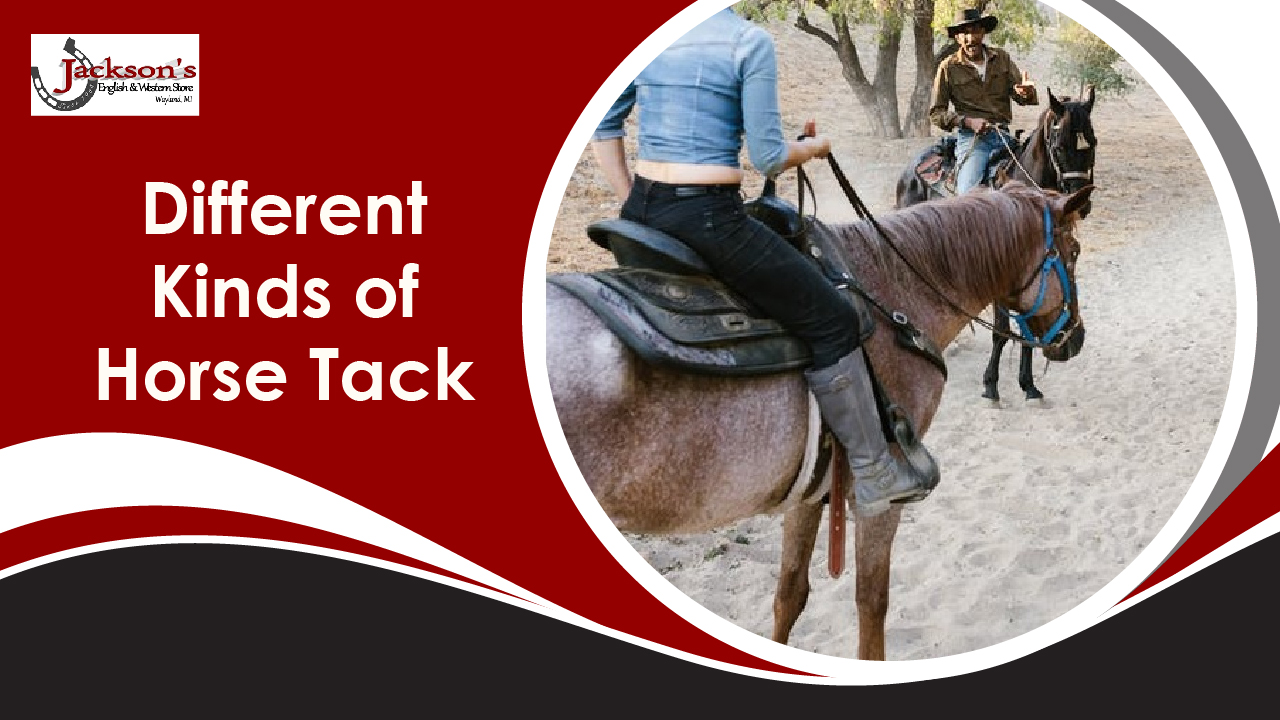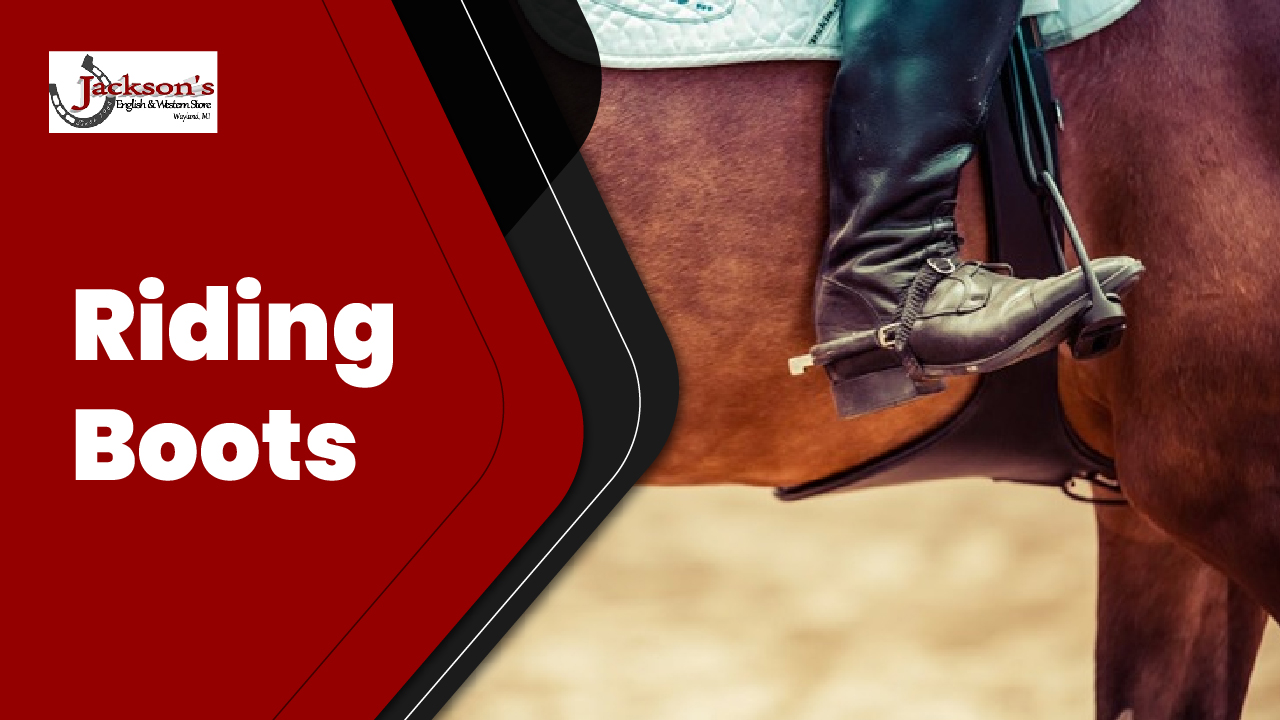Essential Horse Tack Made Easy: Your Go-To Quick Guide
Posted by Jackson's Western Store on Jun 15, 2022
Jackson’s English & Western Store is your premier supplier of all things western wear and horseback riding - so we figured we’d unpack a bit of information on a term that’s commonly used: “horse tack.” So let’s get to the basics!
What Is Horse Tack?
Horse tack refers to all the gear and accessories (see below) that are commonly used in horseback riding. The term “tack” is short for tackle - anything you use to “tackle” a sport - sort of how they refer to fishing gear as “tackle,” too.
The term can be applied in other ways as well. For instance, the expression “tacking up,” refers to the process of outfitting a horse for riding, competition, showmanship, hunting, or some other equestrian pursuit.
It is also important to note that there are different methodologies for “tacking up” including what is considered “tack” as well as the style of the components.
Different Kinds of Horse Tack

The items that are included in “tack,” as well as the style of the equipment used, vary according to the discipline. The following are some of the more common
●English tack: English tack is the gear and equipment used for English-style riding. For the most part, with the exception of a few metal parts (like bits and stirrups), English tack is made of leather. English tack has a highly traditional look. Common English disciplines include:
○Dressage tack: Dressage uses minimal tack because the purpose of dressage is to flaunt the training, handling, and overall well-behaved nature of the horse.
○Hunter/jumper tack: Jumping events require the horse and rider to deftly clear a series of obstacles in sequence.
○Eventing tack: Eventing tack is required for “eventing,” the most challenging of English riding that includes dressage and jumping but also cross-country riding.
●Western tack: Western tack is also typically made of leather, and is similar to English tack in many ways. One of the biggest differences between English and Western tack is in Western’s use of a larger, heavier leather saddle.
○Roping: In roping events, a rider attempts to throw a lasso around the neck of a free calf, as quickly as possible. Tack used for this purpose must be comfortable, practical, and give the rider maximum control of the horse.
○Barrel racing: In barrel racing, the rider must race his horse around a series of three barrels as quickly as possible. As with roping, the tack used for these trials must be comfortable, durable, and give the rider great control.
Essential Components of Horse Tack
Regardless of whether you practice English or Western style riding, much of the tack used is the same between them, although the style may vary. The following are commonly included elements of horse tack.
●Saddle: The saddle is a leather structure that provides support and comfort for both the horse and rider. One of the most familiar pieces of horse tack, there are specific designs of saddles used for dressage, barrel racing, roping, trail riding, pleasure riding, and more. Saddles are generally subdivided into “English” and “Western” saddles. Western saddles are typically larger and heavier than their English counterparts and have a raised saddle “horn” at the front that is designed to serve as an anchor point for a rope. English saddles are typically flatter and lighter than western saddles and lack a horn.
●Saddle pads: Saddle pads, which are also known as saddle cloths or saddle blankets in English tack, rest under the saddle on the horse’s back, ensuring greater comfort for the animal.
●Girth: Also called a cinch, a girth is a band underneath the saddle that runs under the animal’s belly and helps to hold the saddle in place.
●Bridle/halter: The bridle mounts to the horse’s head and serves as an attachment point for the lead ropes (see below). The bridle helps the rider control the horse.
●Bit: The bit is a metal bar that attaches to the bridle and rests in the horse’s mouth, enabling the rider to communicate with and control the horse.
●Breastplate: A breastplate is a sort of like a harness that crosses in front of the horse’s chest and attaches to the saddle, helping to hold the saddle in place and preventing it from sliding too far back.
●Reins: Reins attach to the bridle and are held by the rider, allowing him or her to communicate with and direct the horse.
●Lead: The leads are ropes that are attached to the bridle and used to guide or tie up a horse to a hitching post.
●Stirrups irons and leathers: Stirrup leathers hang from the saddle and attach to the stirrups, which are metal rings through which the rider places his or her feet while riding.
●Riding boots: Riding boots support the rider and protect the legs from injury while riding. Western boots are lace less and have pointed toes and slick leather soles; this prevents the wearer’s ankles from getting caught, tangled, or twisted and makes it easier to fit the foot through the stirrup.

●Riding helmet: Also known as an equestrian helmet, the riding helmet protects the wearer’s head while riding.
Visit Us to Learn More!
Interested in learning more about the subtle differences between different components of horse tack and horseback riding disciplines?
We love to hear from our customers - you can call us at 269-792-2550 - but what you should really do is come visit us at our showroom in Wayland, Michigan. That way, you can get up close and personal with our tack and speak with our professionals about what it’s all used for. We’ll even help you pick out tack for inexperienced riders!

